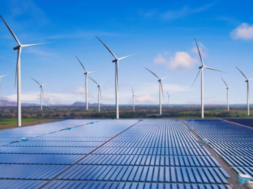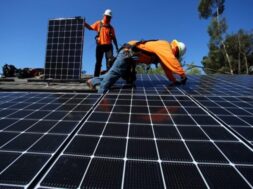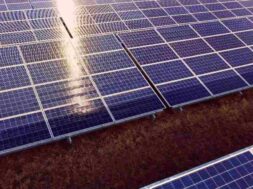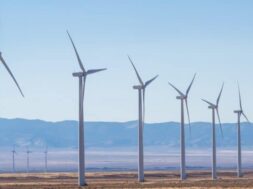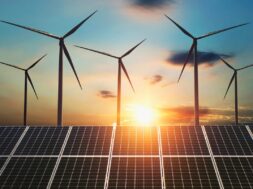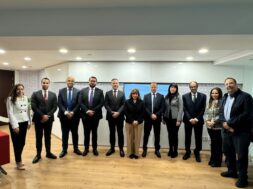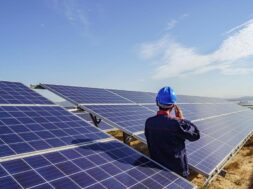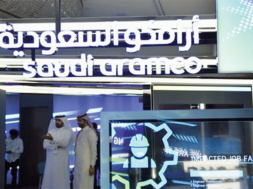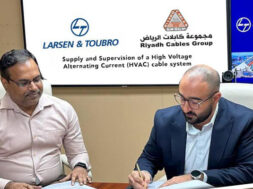
Middle Eastern And North African Countries Are Switching To Solar And Wind Energy Production – EQ Mag
The story of renewable energy in the Middle East and North Africa has long been told from one point of view: the sun shining relentlessly on the region’s deserts. In fact, the sun is a great source of energy and is designed to move electrons. But the winds also blow across the plains, hills and seas of the Middle East as well, and gigantic projects are being built to take advantage of them.
The Middle East and North Africa region began using modern wind energy on a commercial scale about a decade before using solar energy, with projects in Morocco, Egypt and Jordan. But the use of solar energy has actually started since 2010, after the costs of using it fell. The cheapest energy in the world was generated from solar energy in both the United Arab Emirates and Saudi Arabia.
International projects
Of the international projects, the one located in the Al Dhafra region in Abu Dhabi, which produces 2 gigawatts, and there are two of the largest sites with multiple projects, which are the Mohammed bin Rashid Solar Park in Dubai, which produces about 5 gigawatts, and with “Benban” in Egypt, which produces 1.8 gigawatts. , which made headlines. There are smaller solar panels that can be used in homes and factories.
Last year, the region produced 20.5 terawatts of solar electricity, compared to 15.6 terawatts of wind power, almost all of it in Egypt and Morocco. In comparison, Morocco, which is one of the smallest users of electricity in the region, consumed 41 TWh from all sources.
Although it is not as uniform as it is in northern Western Europe, there are excellent sources of air in the Middle East and North Africa. The southern region of Morocco, and the areas surrounding the Gulfs of Aqaba and Suez in Egypt and Jordan, northwestern Saudi Arabia, southern Egypt, and southeastern Oman coast, are characterized by active winds that blow in them. There are parts of Libya, southern Tunisia, the Algerian desert, central Iran, and Kuwait, which are also characterized by strong winds. Compared to most parts of Europe, the Middle East and North Africa region has wide open spaces, where wind farms installed are unopposed by the local population.
Egypt is the most beneficiary of «Cop 27»
Egypt benefited more than anyone from hosting the COP27 summit on climate change. In addition to a 1.59GW project currently in place, another 0.75GW under construction, and 1.6GW being planned, Egypt has signed up a host of projects in recent weeks. They include a memorandum of understanding with the Norwegian developer “Scatek” to produce 5 gigawatts, and with the Emirati company “Masdar” to establish a facility that generates 10 gigawatts, and with the Saudi developer “Aqua” to establish a project that generates 10 gigawatts.
These projects will be the second largest wind farms in the world, and none is larger than the “Gansu” project in China, which produces 20 gigawatts. ACWA will establish an air farm producing 1.1 gigawatts on the Gulf of Suez, which will be the largest in the region when it goes into service at the end of 2026. The total renewable energy produced in Egypt will be 24 gigawatts, which is the seventh largest national potential in the world, according to current figures. .
In addition, Egypt, Saudi Arabia, Oman and Mauritania will need large wind farms to drive their planned green hydrogen projects that use renewable electricity to decompose water.
Pros and Cons
Wind power under MENA conditions is likely to be more expensive than solar power, even if Saudi Arabia guarantees a competitive tariff rate of 2.13 cents per kWh in Dumat al-Jandal (the lowest solar contract in the region was 1.03 cents per kWh). Wind power projects take a long time to build.
But the wind has several advantages. And more clear, as it usually blows at night more strongly than it does during the day. This is what makes it a complement to solar energy. They are useful, especially on the hot early autumn evenings, when people need air-conditioning even after the sun has set.
The wind complements the sun
Solar energy in the Middle East and North Africa achieves a net capacity coefficient, which is the average production of any source in a specific period in proportion to the production during operation to the maximum capacity in the same period, which is about 20% over a period of one year, which allows it to be used at night and seasons. The capacity factor in Egyptian wind facilities reaches 53%. Wind and solar power can help in the best locations, combined to a capacity factor of over 70%.
A high capacity factor is especially important for a green hydrogen economy (production of hydrogen through the electrolysis of water), which depends on maximizing the operating hours of the water analyzer while using cheaper electricity. This explains the reason that contributed to the advancement of Egypt, Morocco, Oman and Saudi Arabia over the countries of the region in this field, as well as other countries that have coastal deserts blown by winds, such as Australia, Chile and Namibia.
Raising capacity factors means that for every gigawatt of air produced, more gas or oil is used than solar energy. Therefore, Egypt’s ambitious use of winds to generate electricity will lead to a decrease in its need for gas by the next decade, at a time when the country’s gas production is declining, and it is close to achieving its goals of reaching a minimum carbon reduction.
Important questions
Important questions remain: First, where will Egypt place the turbines for its future mega projects? The Sinai Peninsula’s airways are relatively restricted, and it is surrounded by mountains. That is why other places should be considered further south towards the Red Sea coast, or other areas inland, which would involve logistical difficulties. The most recent known agreements do not specify any locations or any timetable.
And the second question, has the project to use wind in the sea to produce electricity achieved success, as is the case in northwestern Europe? There are stronger and more consistent winds, and a larger area for development, though at more costs.
And the third question, can countries in the Middle East and North Africa that have calmer winds, especially the United Arab Emirates, Qatar, and Bahrain, make economical use of turbines in order to raise the benefit from slow winds, to the highest possible extent?
And fourth, can other countries that have strong winds but lack energy and haven’t achieved much development yet, such as Iraq, Kuwait, Libya, and Tunisia, start adopting wind technology?
If these questions can be answered positively, these rotating turbines, as well as solar cell panels, will symbolize the transformation of energy production in the countries of the Middle East and North Africa.
